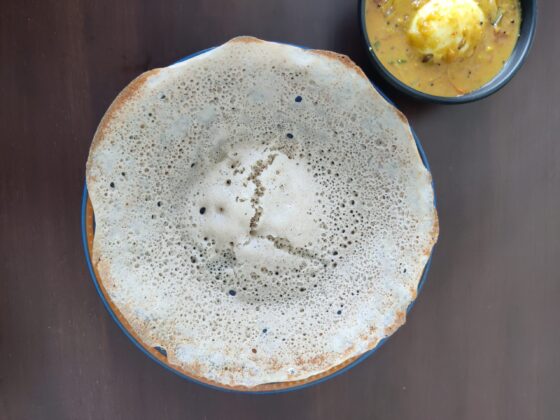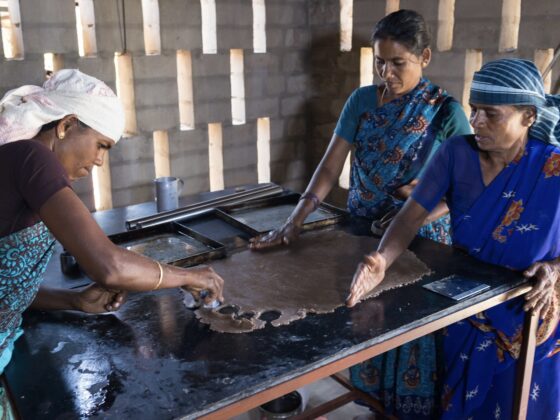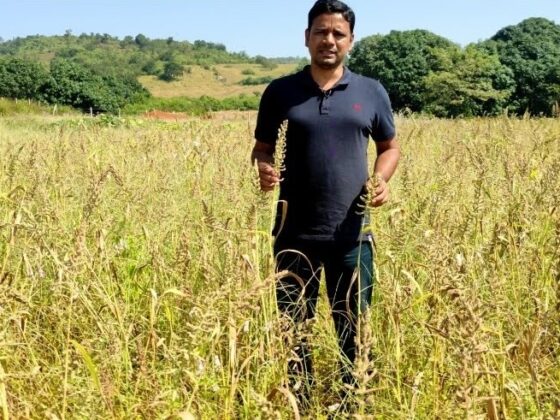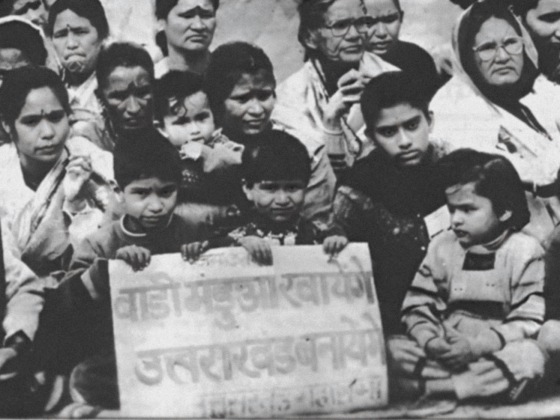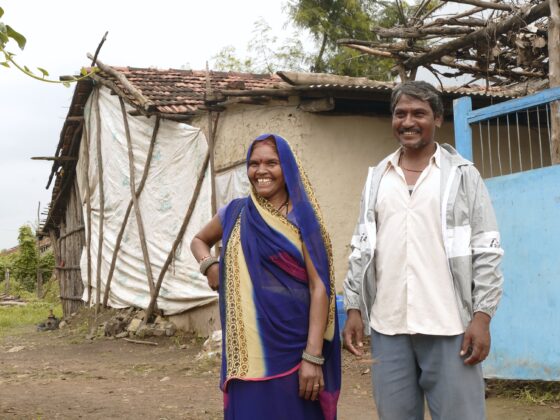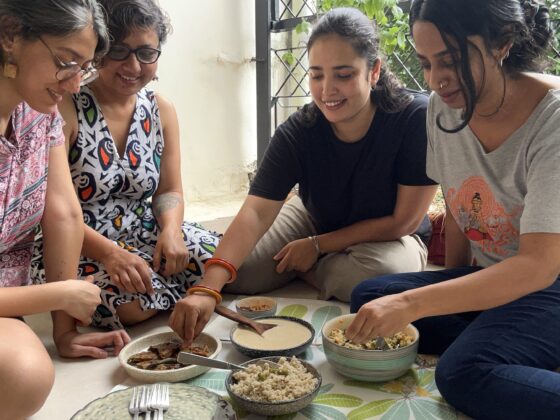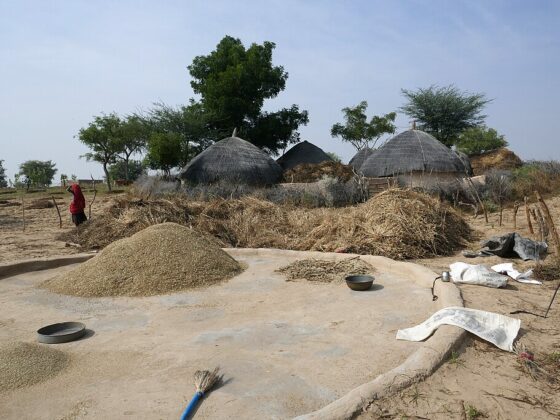Future of Food, a comic produced in English and Kannada, is set in 2035. An exercise in imagination, it asks what hopeful, localised futures look like for communities—especially rural and indigenous farmers in India—who are often excluded from these imaginations because of the nature of innovation and technology.
The comic Future of Food, published in English and Kannada, is set in 2035. It traces the various steps that were taken over time to build healthier farming ecosystems, prosperity for small organic farmers, and how localised technology innovations enabled farmers to drive this change.
Telling stories about different futures can encourage people to think critically about the present, and the decisions that would need to be taken to make these hopeful futures a reality. The team worked with a local partner in Karnataka, the Buffalo Back Collective, which engages with marginal farmers, cooperatives, and farmer groups on sustainable food practices to understand how daily choices can help evolve a better and healthier food system.
A diverse range of millets, grown with companion crops, form the bedrock of an imagined future that is sustainable because they are resilient against unpredictable weather patterns.
About the process, Vishalakshi Padmanabhan, from Buffalo Back Collective, shares:
“We have been working with the women in a village for over two years now. Very recently, one of them, a young woman in her thirties, told me how she can identify 21 different indigenous herbs and leaves in the forest and how to cook them.
A key challenge in imagining hopeful futures is to be able to do it with the communities that are typically excluded from future imaginations.
Despite all that we had worked on together, she had not seen the value in sharing her deep knowledge about this. She didn’t see it as relevant to what we were doing. This knowledge, built from an intimate connection with the landscape and through generations, is systematically being invalidated. And this has resulted in communities not valuing the knowledge they have.
A key challenge in imagining hopeful futures is to be able to do it with the communities that are typically excluded from future imaginations. How are they seeing their own futures? How do they want to play a part in creating those? How can we hope for a different future where technology emerges from the people who actually need and use it?”
Read the comic in English

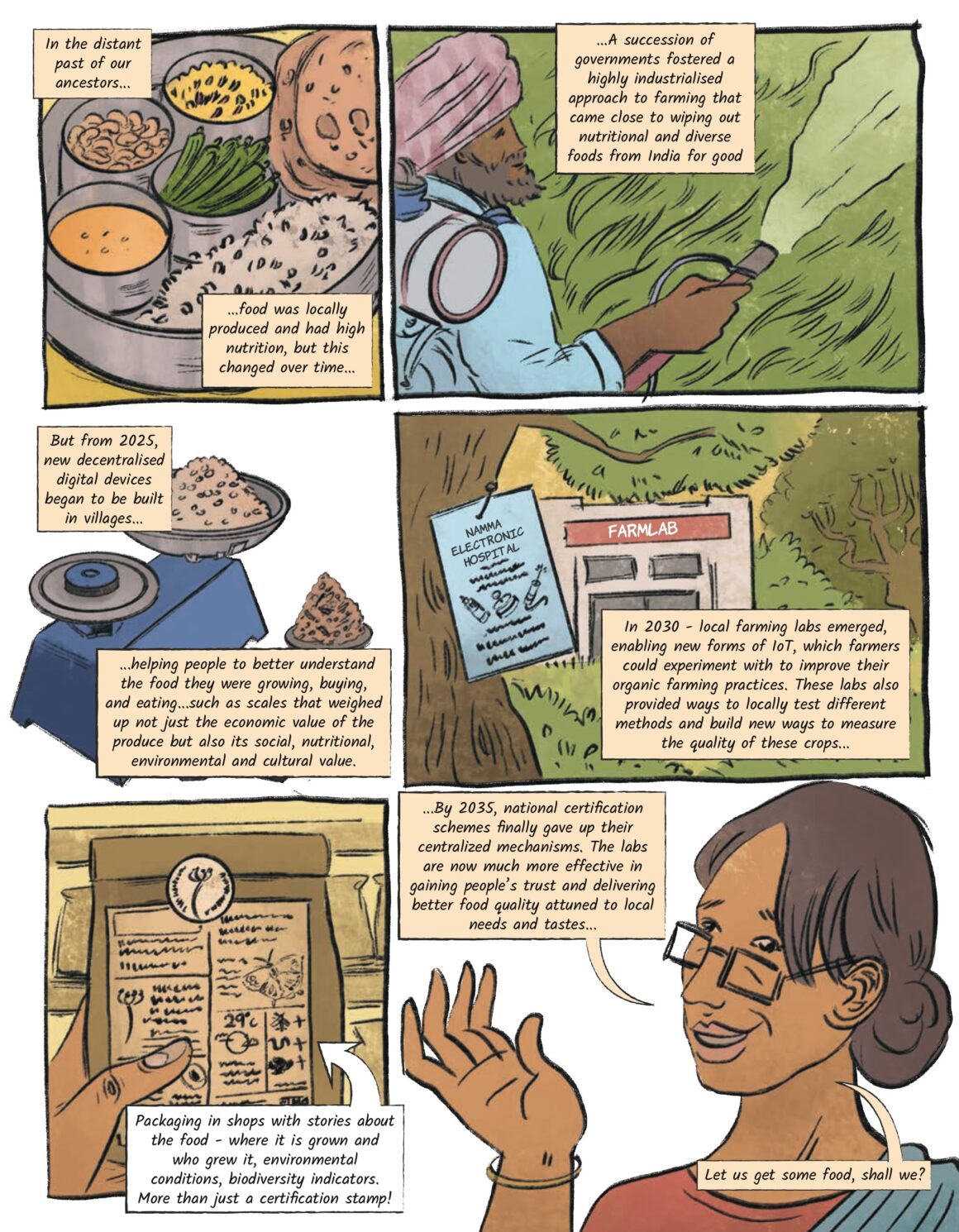
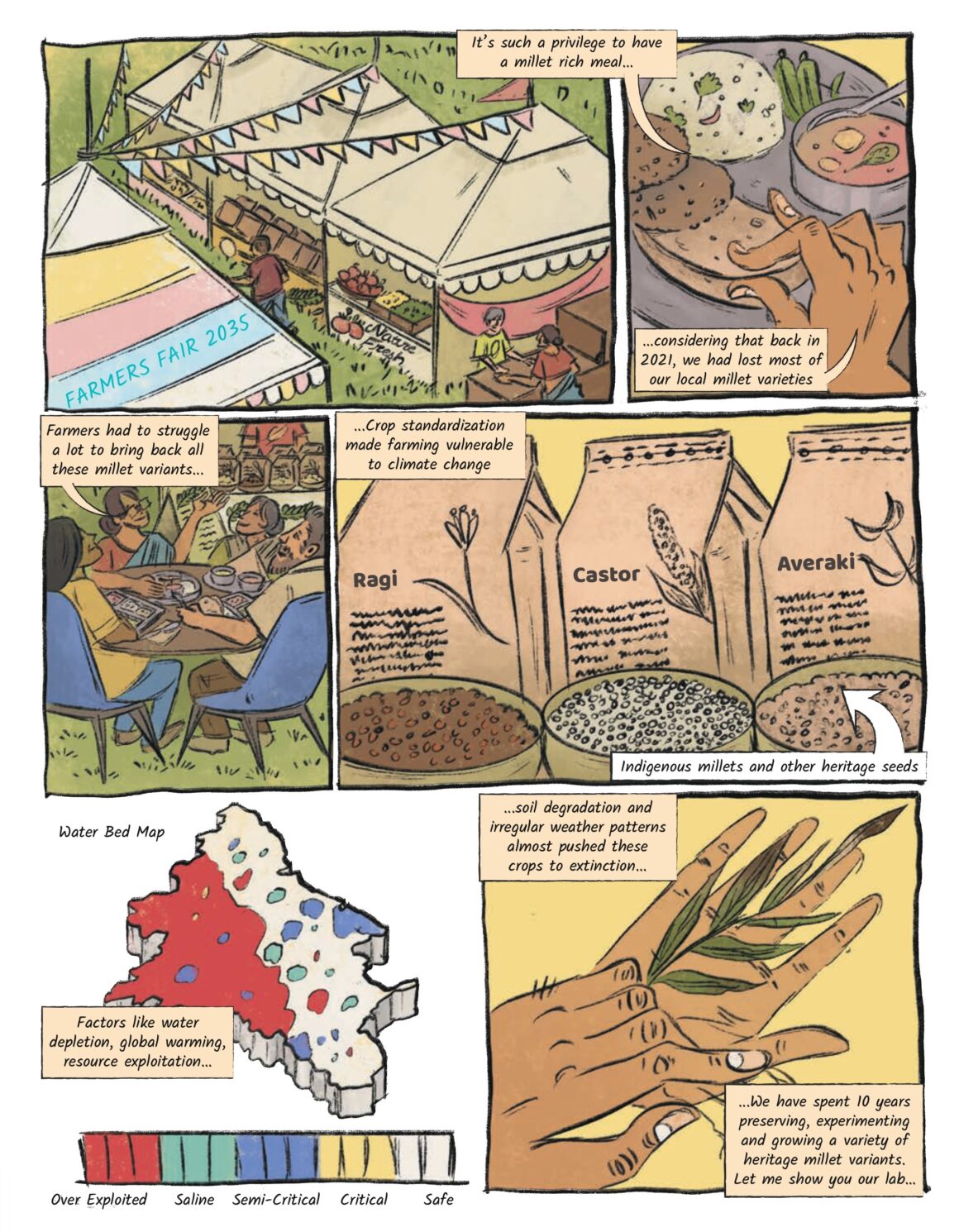
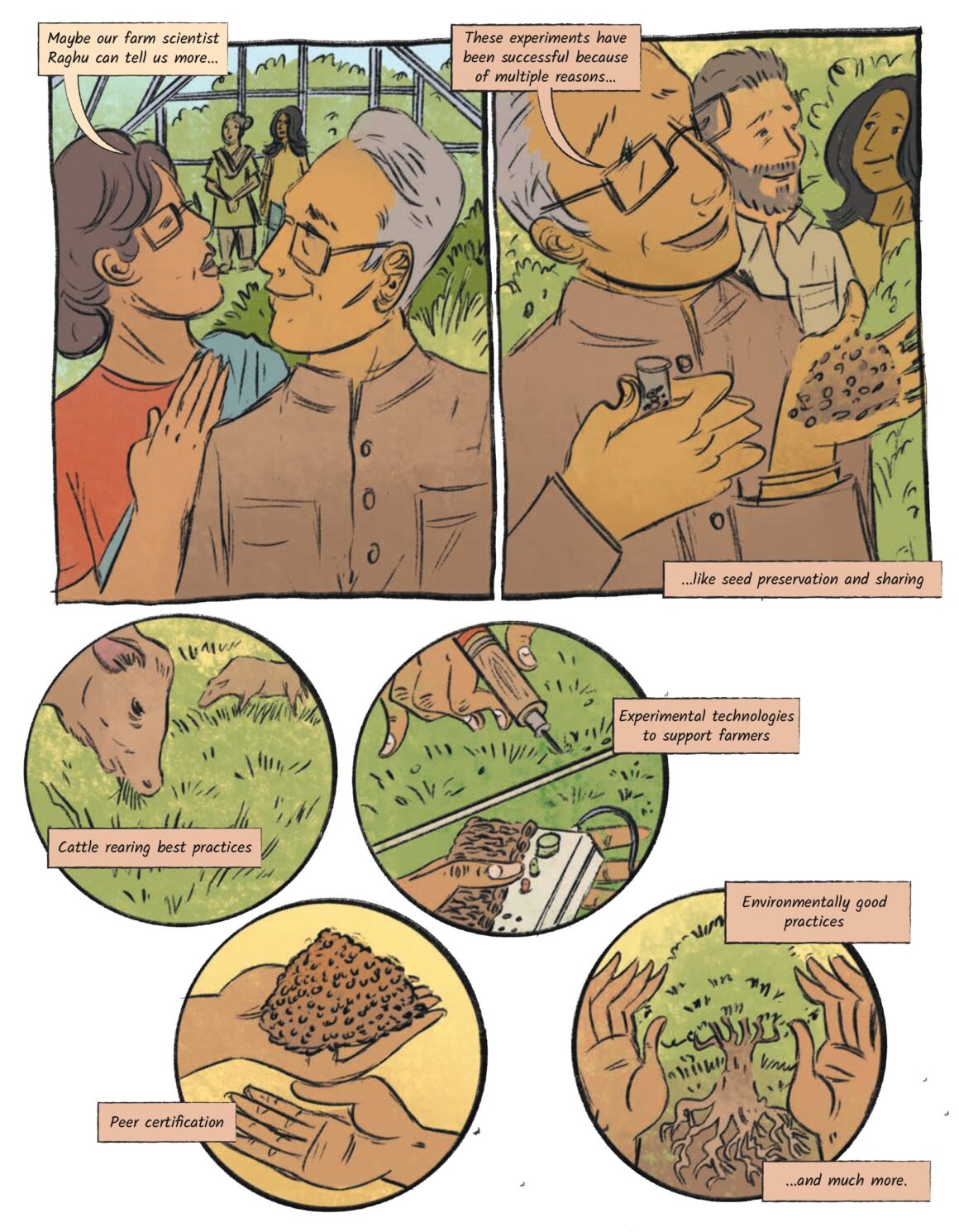
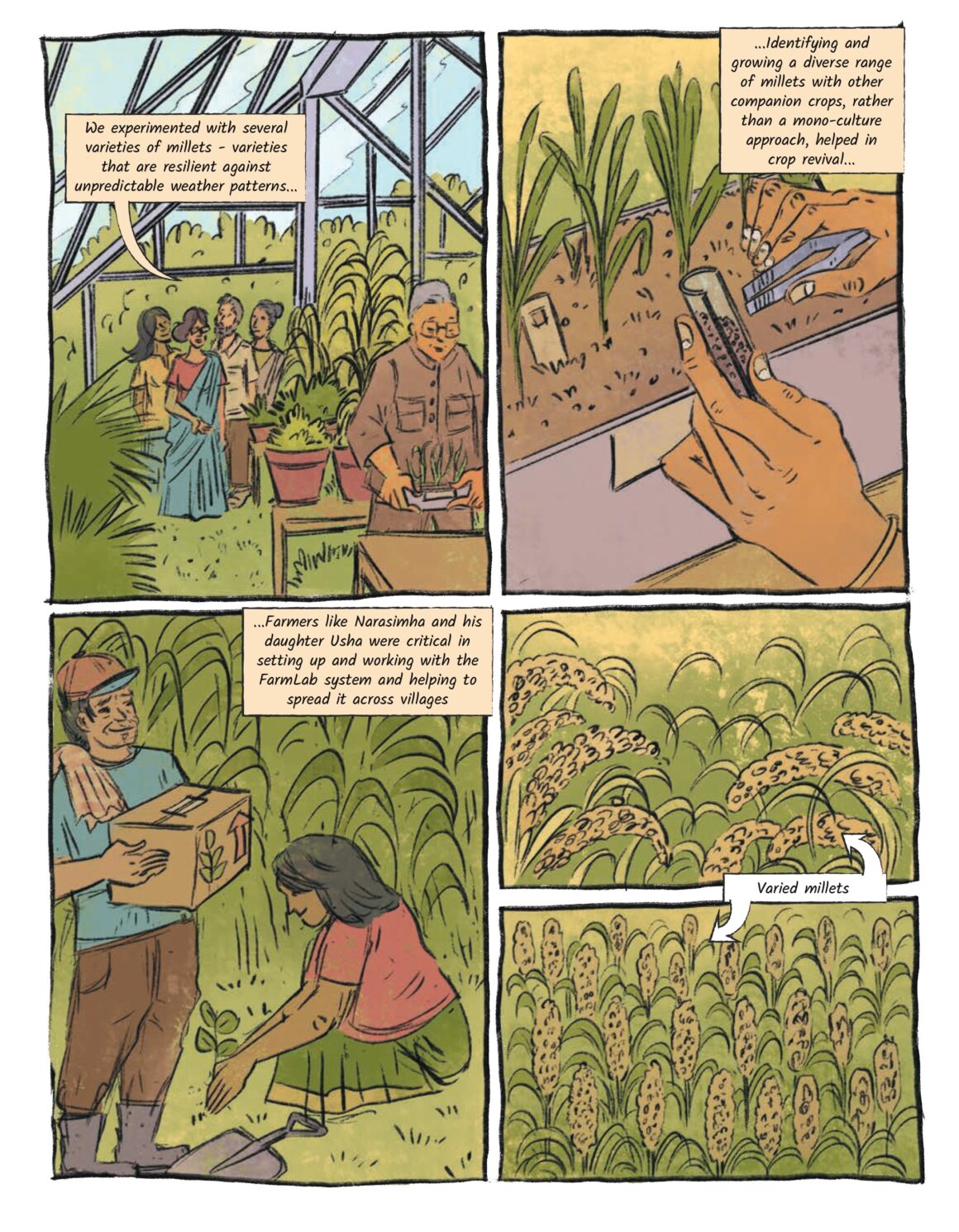
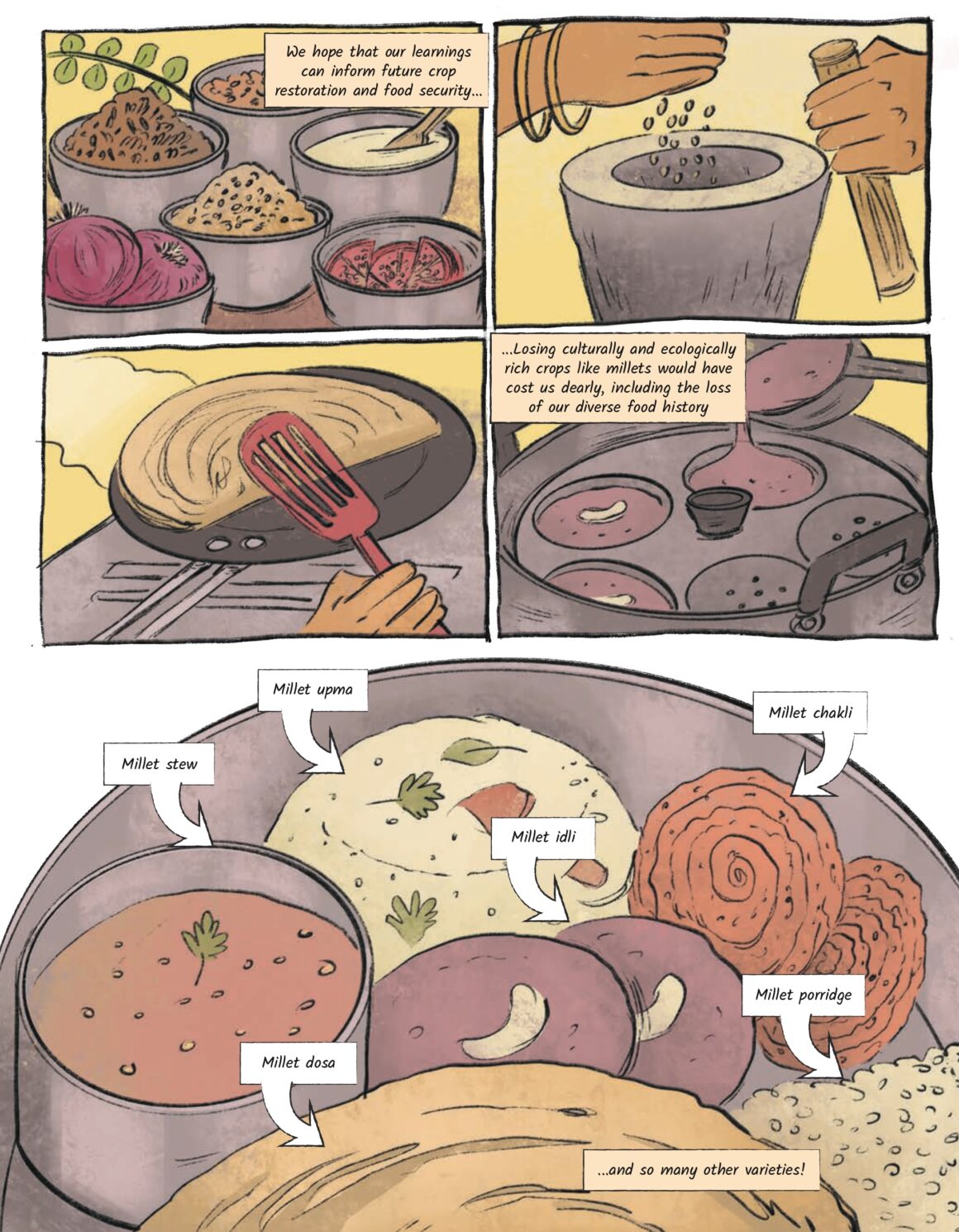
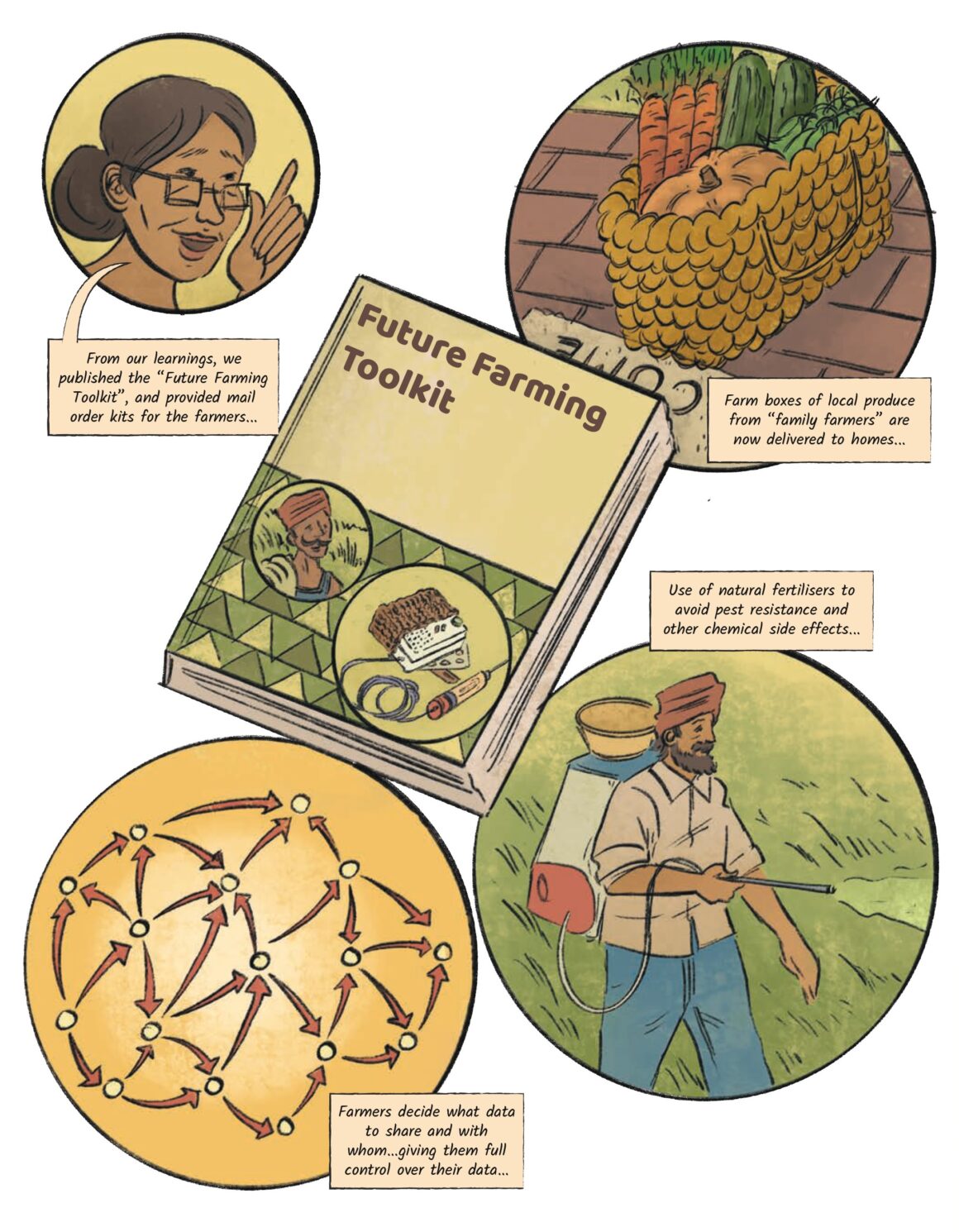
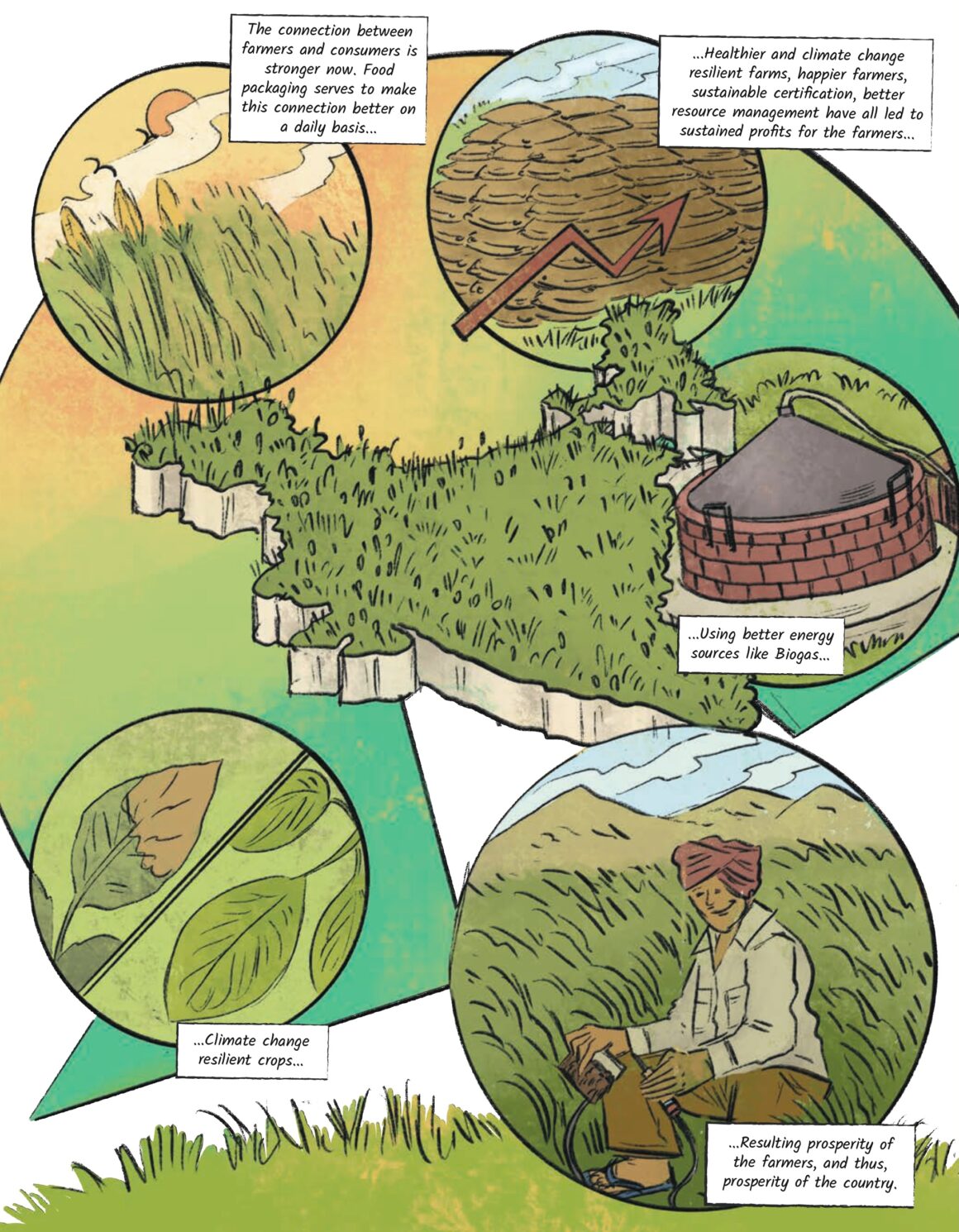
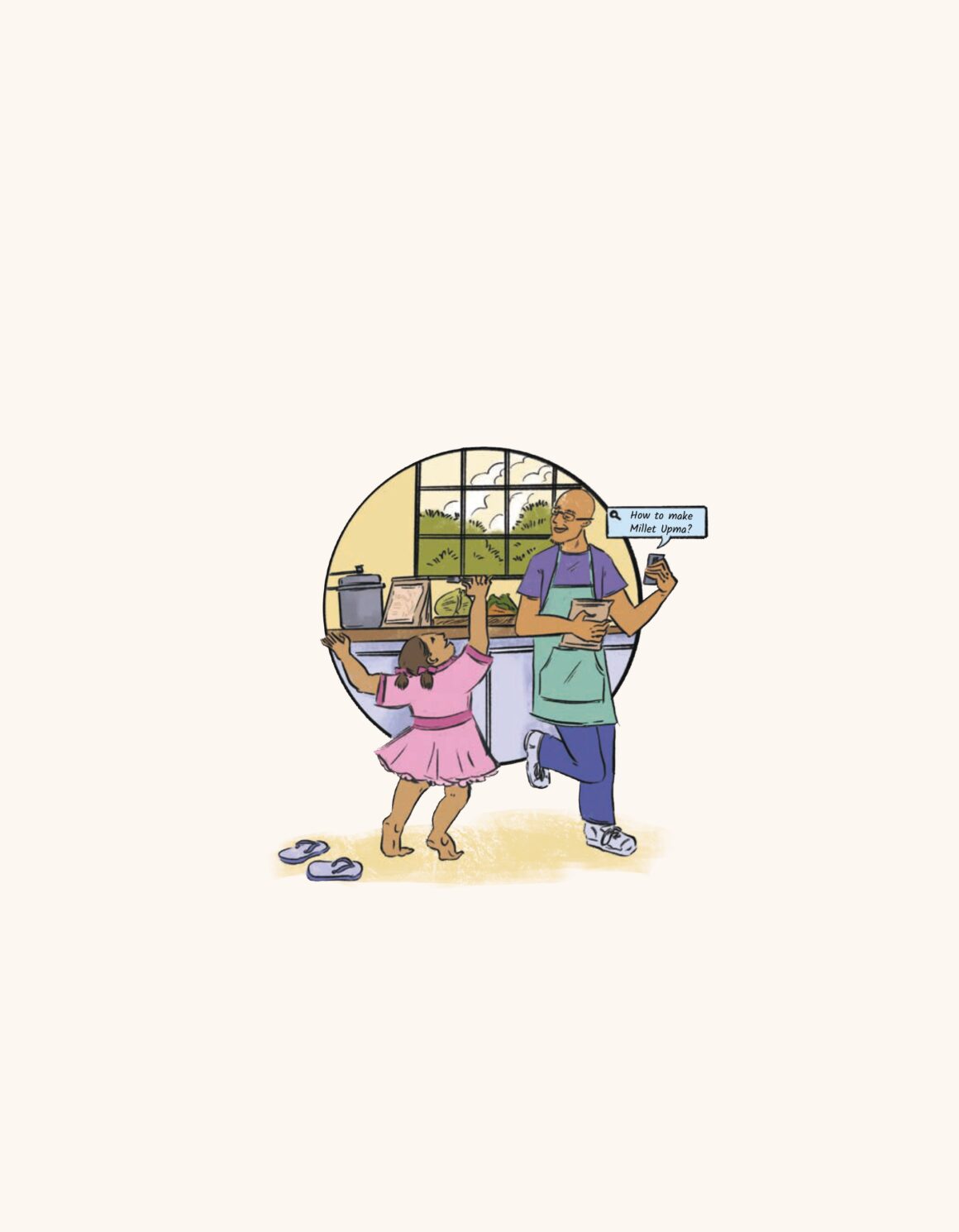
“For most farmers, technology and innovations are things that trickle down from universities or are explained to them by experts. Agency for farmers has never been an active consideration in this process. The notion that innovation—technology, growth, development—has to come from the world outside and not from within, seems to be cemented now.
Bringing design into this process is interesting. While there might not be in-depth knowledge of the intricacies and complexities of farming among designers, there is an openness to deeply engage with the farmers. It was still hard to engage with the farmers however, many of whom have pre-existing mind blocks, having only been exposed for years to the likes of agricultural scientists.
The most crucial aspect of agriculture is the deep human connection with crops, soil, and living beings. Unfortunately, agri-technology seeks to break that, to take away the deep connection between humans and the living ecology.
To address this, we need to work with them longer and have deeper engagements. And this needs to happen at a local level and in response to local culture, values, and practices. Localised, decentralised technology that is built by people who are connected to a place, who have the inclination to understand what is actually needed, can be more useful, relevant, and inclusive.
Agricultural solutions can only work at a local level. The problems we face today are because we haven’t allowed local systems to flourish, including deciding what seeds to sow and what crops to grow. Even that is decided at a state level based on some statistical projections, resulting in farmers just buying the seeds that are made available to them.
The most crucial aspect of agriculture is the deep human connection with crops, soil, and living beings. Unfortunately, agri-technology seeks to break that, to take away the deep connection between humans and the living ecology. It is alienating, and attempts to replace this human connection with machines.
When decisions are made locally, they take into account personal situations and perspectives and are sought to be built on a foundation of care. What we have to do is to imagine and work towards different futures that are pluralistic, and embedded in place and community.”
Read the comic in Kannada:

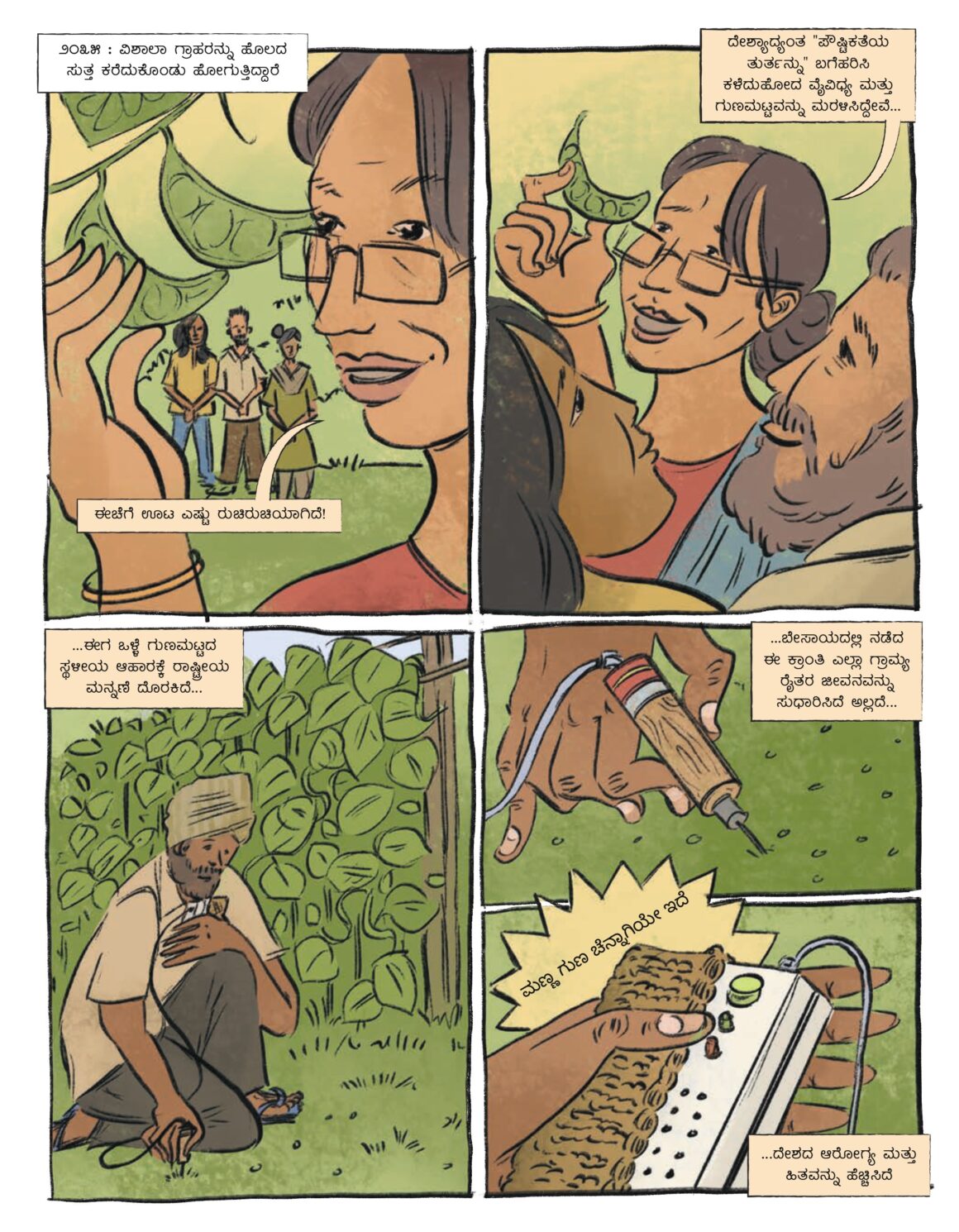
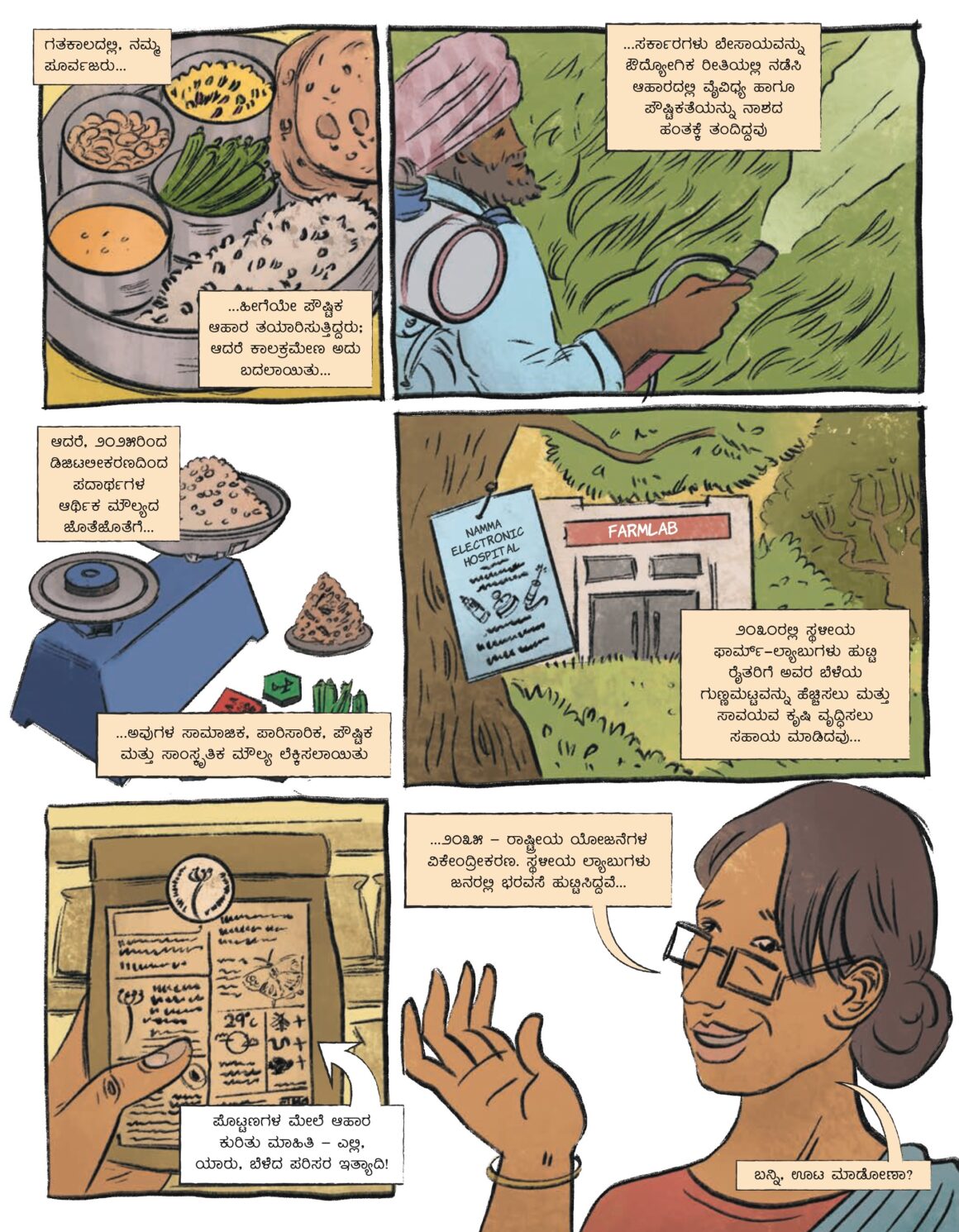
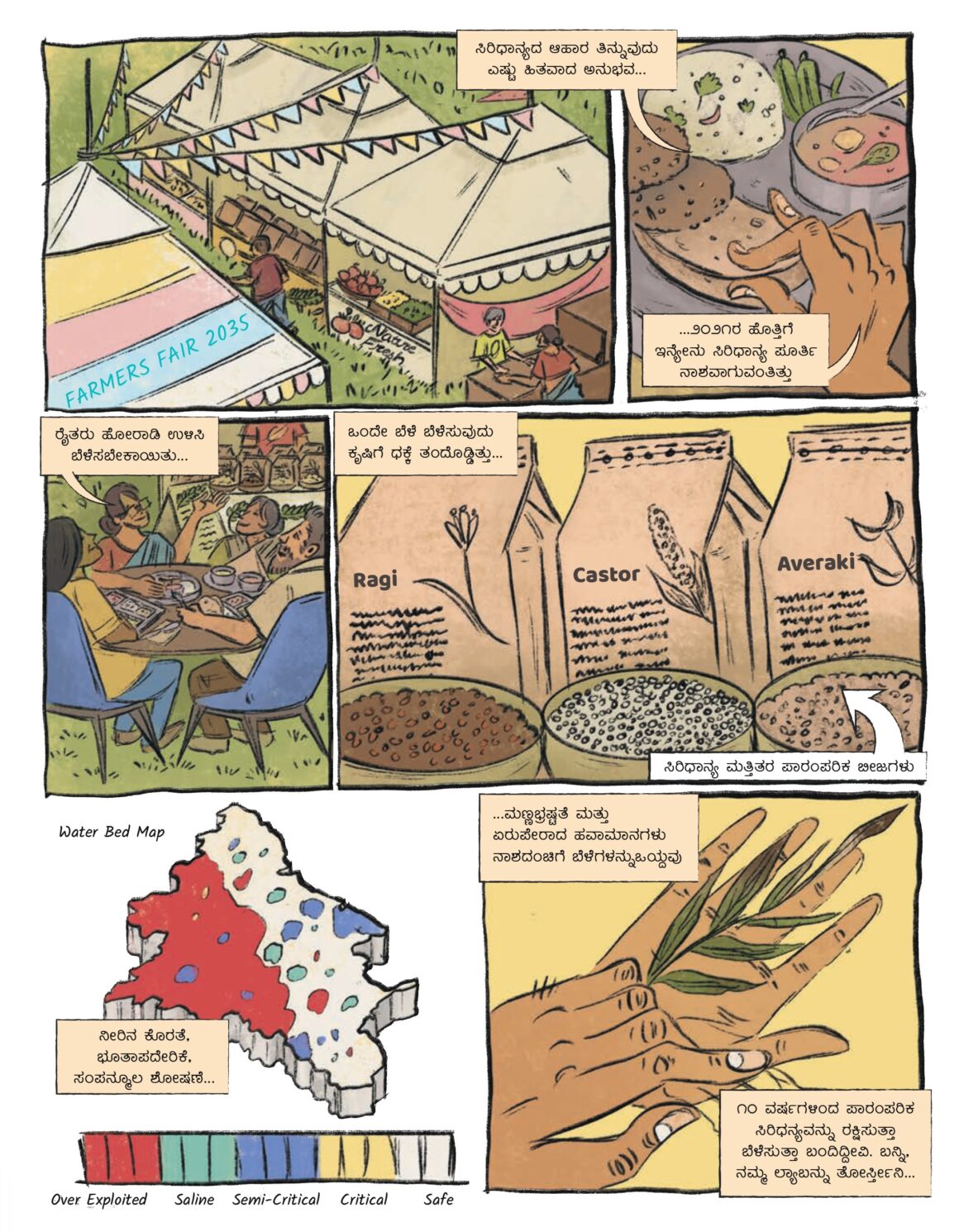
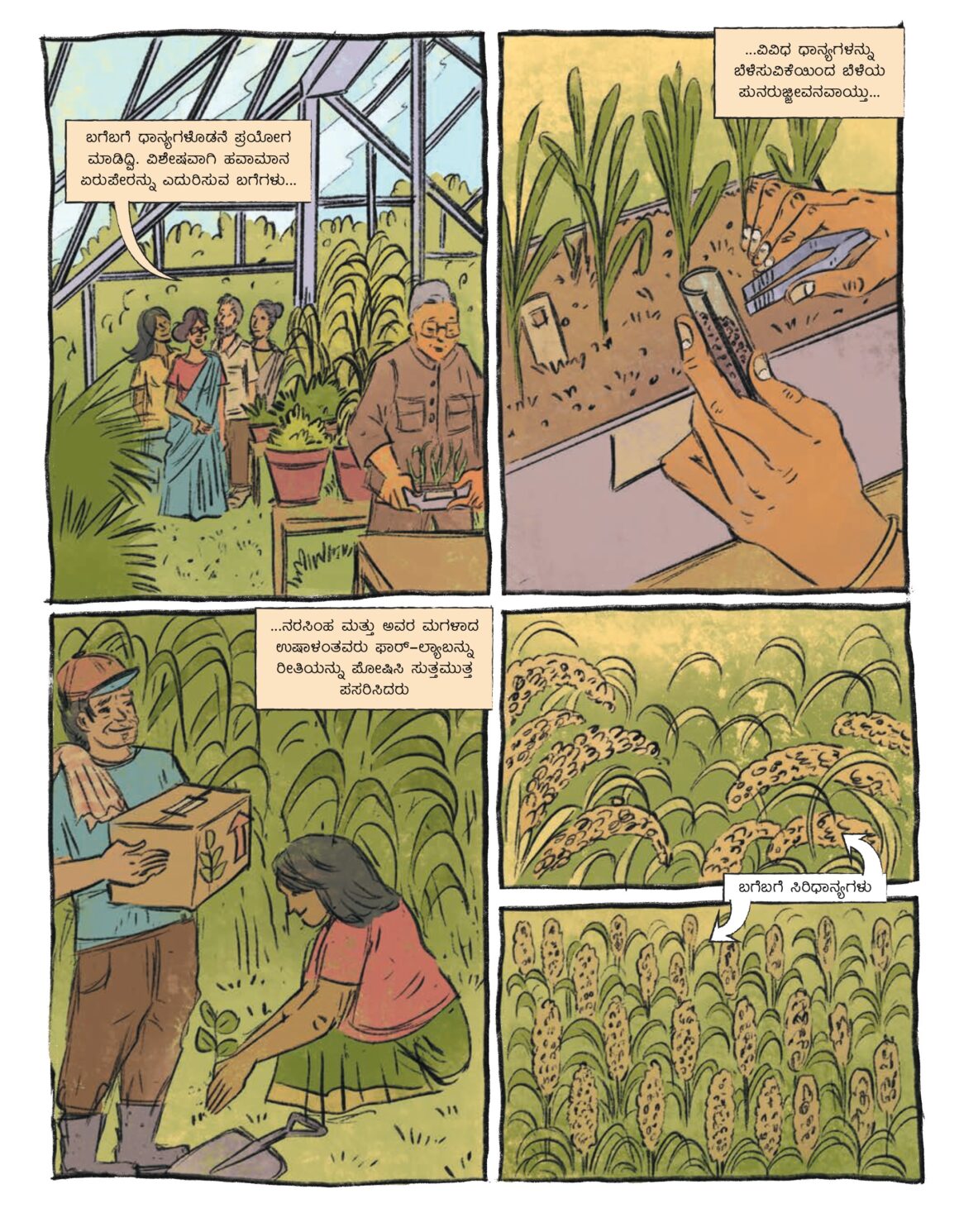
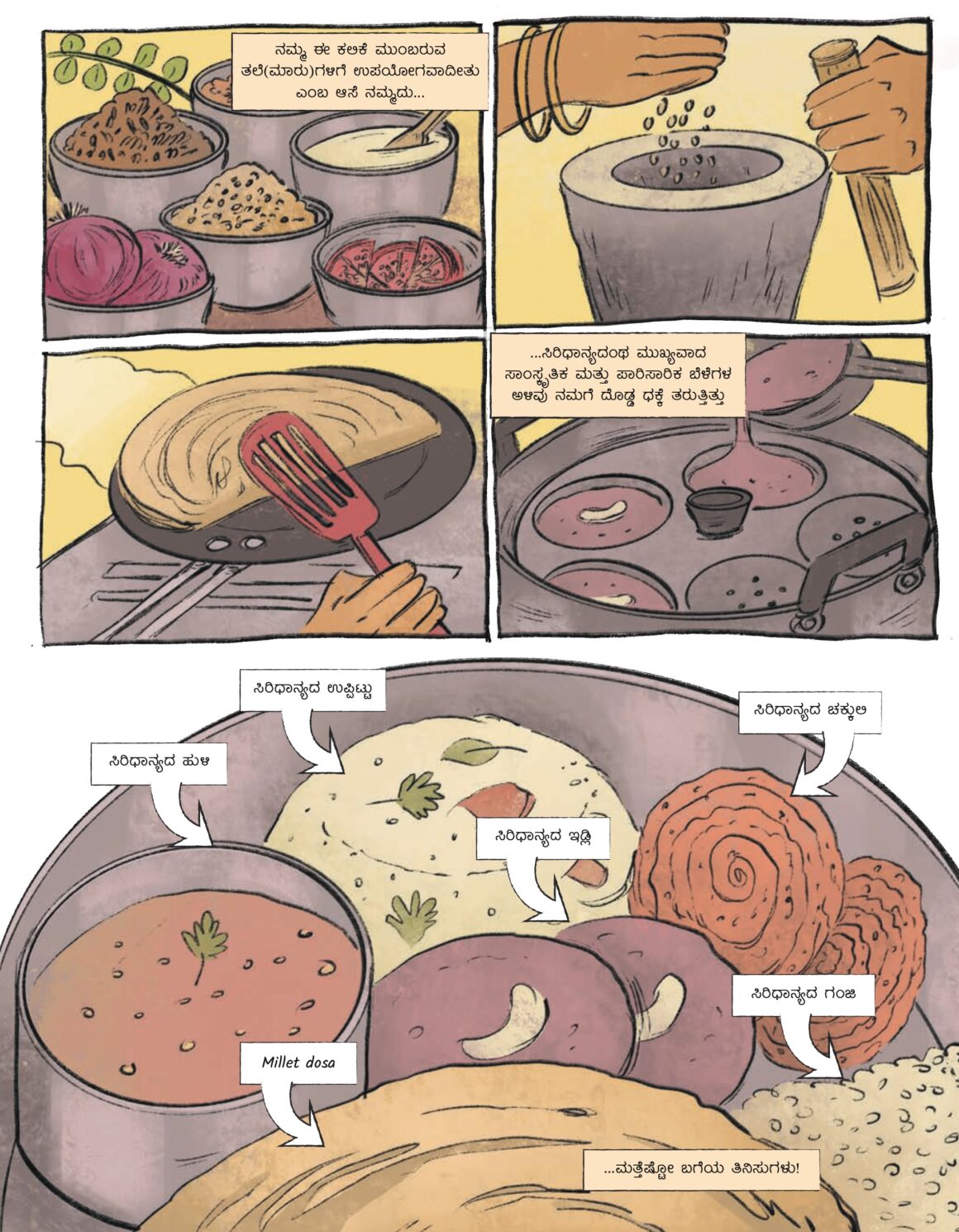


‘The Future of Food’ comic was published by the Decentralising Digital Project under a Creative Commons Attribution 4.0 International License.
Babitha George, Romit Raj, Jon Rogers, Martin Skelly, Neha Singh, Loraine Clarke and Pete Thomas were part of the Decentralising Digital Project, a collaboration between the University of Dundee and the Indian design research agency Quicksand. Illustrations are by Gaurav Sharma, and translations by Madhav Ajjampur. The project sought to challenge existing narratives, reflect the diverse hopes that people and communities from rural India have for their futures, and the roles that emerging technologies might play in supporting and delivering these.

This article is part of the Millet Revival Project 2023, The Locavore’s modest attempt to demystify cooking with millets, and learn the impact that it has on our ecology. This initiative, in association with Rainmatter Foundation, aims to facilitate the gradual incorporation of millets into our diets, as well as create a space for meaningful conversation and engagement so that we can tap into the resilience of millets while also rediscovering its taste.

Rainmatter Foundation is a non-profit organisation that supports organisations and projects for climate action, a healthier environment, and livelihoods associated with them. The foundation and The Locavore have co-created this Millet Revival Project for a millet-climate outreach campaign for urban consumers. To learn more about the foundation and the other organisations they support, click here.

